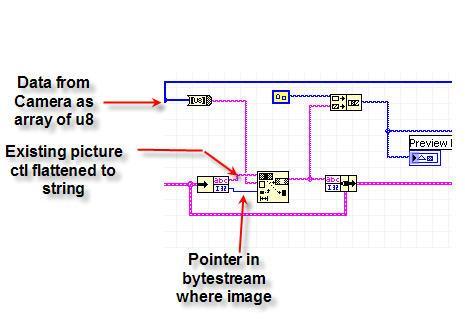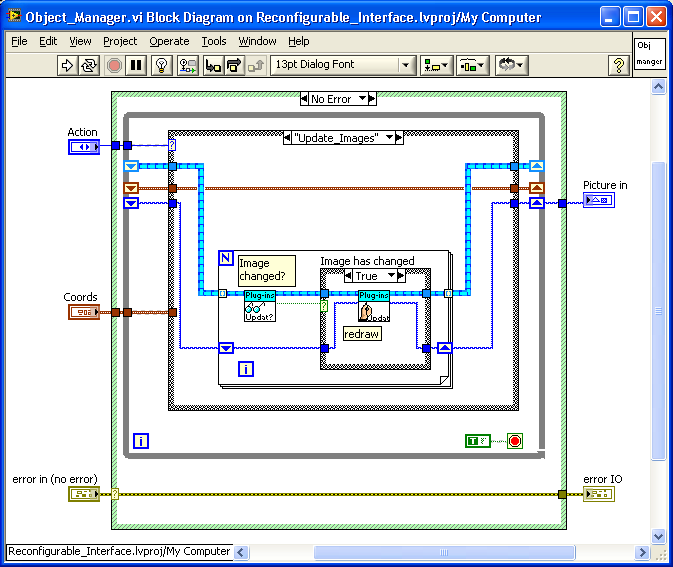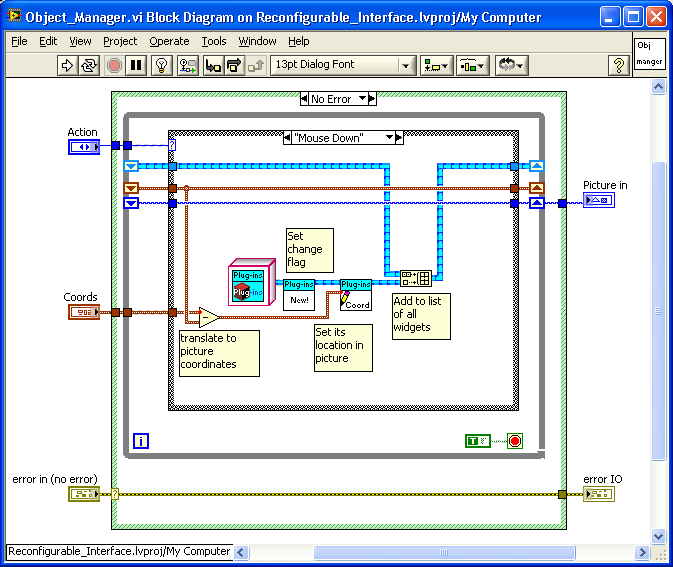
LAVA 1.0 Content
-
Posts
2,739 -
Joined
-
Last visited
-
Days Won
1
Content Type
Profiles
Forums
Downloads
Gallery
Posts posted by LAVA 1.0 Content
-
-
-
-
QUOTE (crelf @ Jun 15 2008, 07:43 PM)
Have you heard http://en.wikipedia.org/wiki/Artillery' rel='nofollow' target="_blank">MRSI, pronounced Mercy ? It is anything but!
Ben
-
-
-
QUOTE (Yen @ Jun 15 2008, 01:19 PM)
...You can hear that? If so, you've got a much better ear than I do (and I do play a bit).No I can't hear it but I seem to be able to sense it somehow. In my "other life" I am surronded by musicians and find myself often bombarded with talk of diminished 7th and pentatonic scales. It is usually about that time that I wonder off into the other room and check the forums because before long they start playing the game of "Lets turn the music way up and start yelling at each other."
But back to the topic.
I have given more thought to the four vs five finger rendering and am inclined to believe the artist wanted to give the goat guy a greater humanlike nature (hands are supposed to by one of the harder parts to draw).
Why would you think goats were chosen to represent the the protagonist?
I am curious what you have to say about this Q since goats were used in many interesting passages of scripture. Daniel's "goat with two horns" and one of the apostles wrote of "seperating the goats from the sheep". In the culture I grew up this often taken as seperating the bad (goats) from the good (sheep). But the rebel in me makes me question that meaning. I thought the goats were often kept along with sheep because the sheep were dumb and would follow each other off a cliff, while having a goat around the sheep would follow the goat. So I wonder if that passage really is intended to reference those that blindly follow the masses vs those that question the action of the mob.
The card sharkster appers to have morphed into the donkey between scenes, they could be one and the same.
OK, that is my last series of comments and observations before you pull back the curtain.
Ben
-
QUOTE (crelf @ Jun 15 2008, 04:23 PM)
I did

Unfortunately this year I won't be able to come to NIWeek, so not LAVA BBQ either

-
Is anyone clear on the language of the song?
The guteral sound is what made me first think Frnch but if its not french then maybe its hebrew. When I double clciked on Yair's link the YuoTube page had hebrew replies (since (I think) hebrew occationally imbeds words within words I don't know enough to be able to use my hebrew-english lexicon). I had once read that all hebrew music was written in a minor key (is that an over generalization?) so this music passes that test.
SO now I want to think this is a story of Isreal.
The swimmer represent those that choose the remain in the diaspora and the suit goat represents those that returned. The pursuit by the whale repesnts the persecution by the christian ( water is used to symbolize baptism) (trying to live according to Mosaic law in christian countries).
The card sharkster was that counsel by the allies after WWII that decide they would create Isreal. (Side observations: Most cartoons hands are rendered such that they have only four finger (three plus thumb) the goat guys have five. ???)
The mule was the US and Great Britain who encouraged the creation of Isreal and fostered the migration. The mule did not aide in the final work and the suit goat had to do it alone.
After making the leap into nationhood and then passing by fire (military action) the emerged as a small country. The end scene where the goat and the mule look at each other sorta says "So now what?"
Am I getting any closer?
-
QUOTE (Justin Goeres @ Jun 15 2008, 07:08 AM)
Great job lads ! :thumbup:
Thank you Chris and Justin :worship:
-
No CAR available.
A future version of LV will give broken wires for this code construct.
Ben
-
I reported this to NI under SR# 1181201.
Stand-by for a CAR#.
Ben
-
QUOTE (Eugen Graf @ Jun 12 2008, 05:29 PM)
Hello, this Question in not easy, but:which programm architecture do you use in your projects if you use very much parallel loops, which communicates with syncronisation tools (Queues, Notifiers, User Events and so on)?
Thank you, Eugen
I am involved in the design of many of the applications that come out of my office. I have taught my developers to first evaluate the applications needs before deciding on an architecture. I do not believe any two application have left our house that use the same architecture.
App Design in 15 minutes (an obvious oxymoron)
1) Understand the requirements of the app. Create a diagram (model) that illustrates the various responcibilties and the interaction between any cooperative entities.
2) Give the entities descriptive names and list their actions.
3) Define the data used to in the inter process communications.
4) Evaluate the naute of each interaction (these are data paths). 1-to-1 1-to-Many, Many-to-1, etc. Also concider failure scenarios, and performance req's. A high data rate app may require multiple CPU's work cooperatively to keep up with the data stream.
5) For each of the Data paths, identify a comm mechanism that will meet the req's. If possible use built in mech's queue, notifier, etc. If no "out-of-the-box" sync mechanism fits the bill, then design a custom one. In the case of customs I favor AE types but will use others.
So I guess the answer to your question is I use all of them and sometimes invent my own.
Have fun,
Ben
-
QUOTE (jbrohan @ Jun 13 2008, 01:53 PM)
This routine is useful to check on the location of all VI's in your project. I generally use a rather simple structure without dynamically loaded vi's so it works for me. It's written in LV 7.0The problem it is aimed to solve is to ensure that you are not linking in vi's from other projects, and that all your vi's are in their expected places.
John
Hi John,
This is indeed usefull in LV 7 and previous, it's cool to share it !
If you switch to LV 8 you'll see that the LV project window has great new feature to see where are the VIs called in a project. :thumbup:
-
QUOTE (PaulG. @ Jun 12 2008, 10:56 PM)
And what's about hail?
-
Its not French then?
Leviathan?
Its was involved in both scenarios but only one was pursued by it.
The scene were you can see that the one in the suit was the one that choose his card seems signifigant.
Ben
-
It work great. I pass from 20fps 60% of CPU to 30fps 10% of CPU it's much better that way.
Thank you all for the reply, and thank you Norm for the hack
Dany
-
Ben's comments remind me a couple of books I read, I don't know if it coud be related to religion or more globaly to spirituality but the wales (or sometimes daulphin) makes me think of something of that kind.
My understanding of this video is not clear in my own mind, at first it left me kind of sad and after wiewing it a couple of times I felt chilled out and - not faithfull but - hopefull.
I couldn't say why

-
-
QUOTE (Yen @ Jun 12 2008, 02:21 PM)
Ok it look like a nice hack but I not able to get it working
how to determine the pointer in bytestream
Any idea
Dany
-
-
Some one knows about an activeX or dotNET control that can display images at a higher frame rate then the picture control. Currently I use the picture control to display 2d array of RGB value (32bits) as fast as I can, but I use Flatten Pixmap.vi and it takes 30ms to process my 640x480 image and it take a lot of CPU time. Is there other way to do this?
Thanks
Dany
-
I don't understand the langauge usd in the music.
The video aws well done. Like the the movie "Brazil", after viewing it multiple times I came away wondering "What was that all about?"
I liked the shadow of of the grim reaper with head on the skull (about 2:30 into it, using a shadow to fore-shadow) as well as the whale swimming bewteen alternating trees. If pressed I would have to say its the story of two friends that have taken two seperate paths. One to short term pleasure followed by enternal flight from a whale dispatched by an under-wear clad congregation. The other took the less pleasing path that ultimatly culminated in his death and resurection. The signifigance of the donkey still evades me. It was an asset in much of the journey but could not carry him the final miles, although it was there to great the resurected.
Now it is my turn!
What do the words say?
How did you find it?
What do you think?
"tag" you are it!
Ben
-
QUOTE (Aristos Queue @ Jun 11 2008, 03:49 PM)
No. It is perfectly legitimate to store a LVClass in any functional global, including action engines.What I suspect you've read is my ravings about a better way to write the action engine itself using LVClasses. That new, revised action engine still stores data just like the ones you've written for years, and it can store any LV data, including LV classes. But it is more extensible and reusable.
http://lavag.org/old_files/monthly_06_2008/post-29-1213214149.gif' target="_blank">

Thank you, Thank you, Thank you!
Ben
-
QUOTE (Omar Mussa @ Jun 11 2008, 11:19 AM)
1) read from real-world source and update each object with a new value
2) Keep screen updating at 10 Hz
3) GUI, user can add new or toss old objects. Also can change attributes of any widget.
The screen updates use the AE to invoke "Update Image" methods and widget that have a new image get re-drawn then picture is updated.
When a mouse down event fires a new widget is added to the collection inside the AE and a the Image Change flag is set true.
So I am still wondering if I am going the wrong way with this.
Ben





Participate to a world record !
in LAVA Lounge
Posted